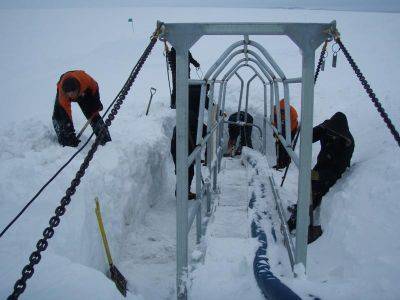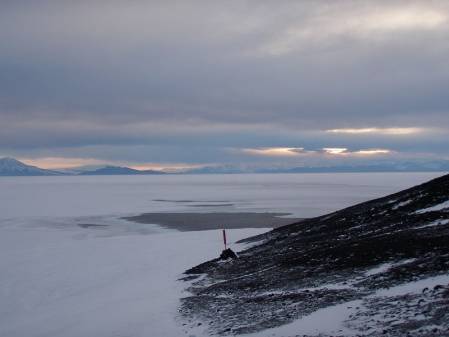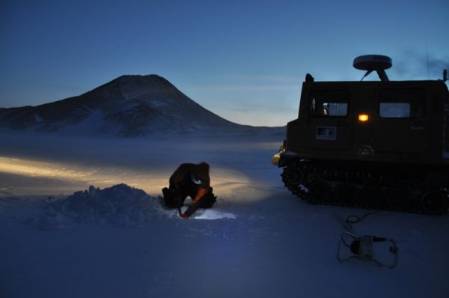Author: Nicola
Date: 18 September 2013
Temperature: -21C
Wind Speed: 15 knots
Sunrise: 7.10
Sunset: 18.30
Heading for a walk amoung the pressure ridges © Josiah
The pond in the village where I grew up would occasionally freeze over in winter and, with my head filled with images of polar explorers, I always wanted to walk onto its thin, enticing shell of ice. So, this evening it was a great thrill to be able to step from the land in front of Scott Base and onto the 2m thick sea ice.
The moon rising above the jagged silhouttes of the broken ice © Nicola
I was heading out to explore the extraordinarily beautiful features known as the pressure ridges. Formed as the ice is squashed up against the land during winter these jagged walls of ice are slowly forced up into strange, distorted, awe-inspiring shapes. As the tide rises puddles of sea water appear around their base then freeze into ponds of blue ice. The shapes are never static, and over the coming months they will gradually change; fracturing, splitting and sagging under their own weight.
A jumble of fractured sea ice and frozen ponds with Mount Erebus behind © Nicola
I carefully followed the safe flagged route, probing the snow in front of me with a pole, checking for new cracks in the ice. In the gloom as the sun went down I was confronted with two massive dark shapes – seals. During the summer hundreds will make their way through the cracks around the pressure ridges and come up for air. I left them peacefully relaxing on the ice and headed back to the base.
Seals lying on the ice amoung the pressure ridge walk © Nicola



.jpg)
.jpg)
.jpg)
.jpg)






